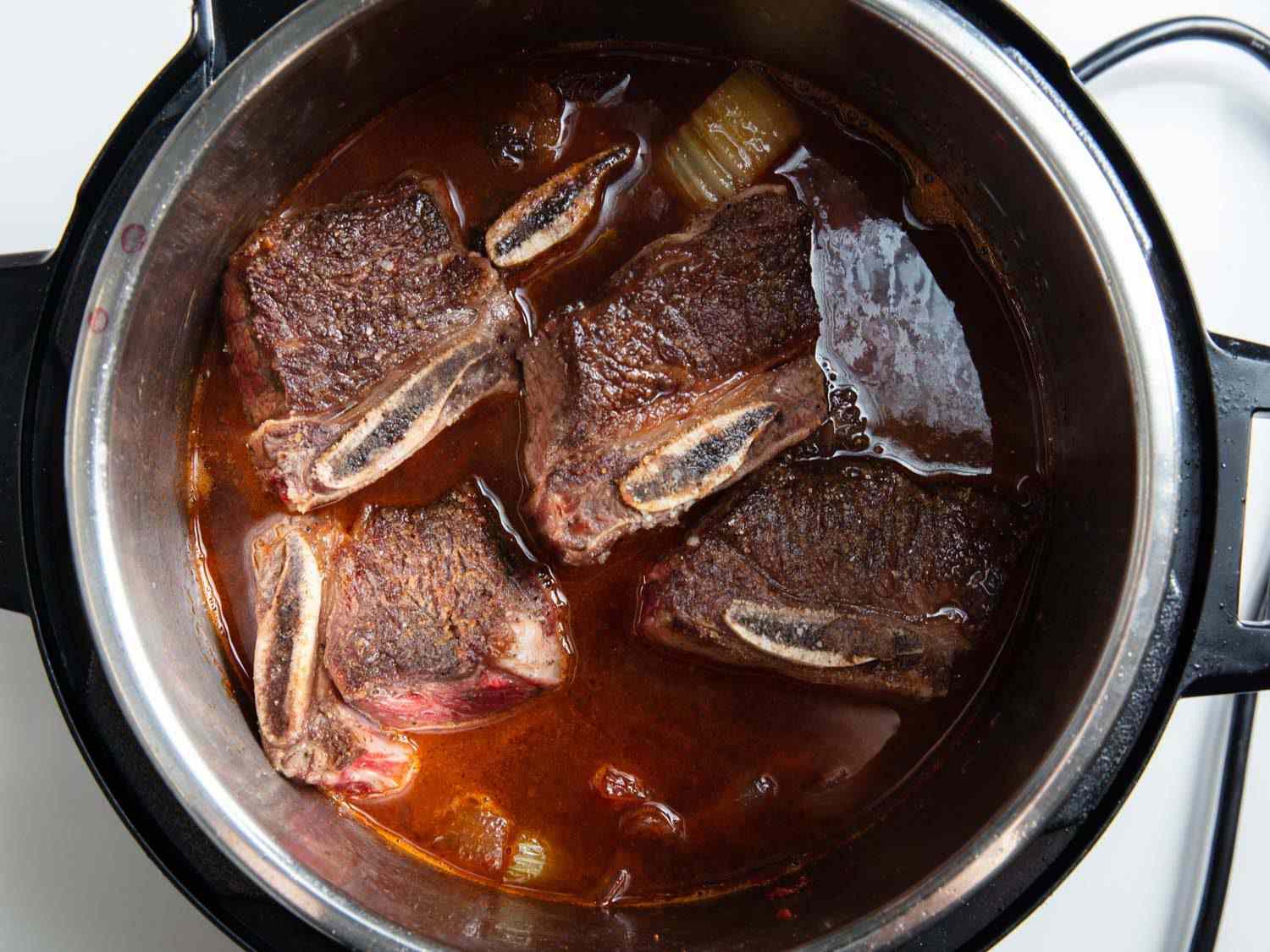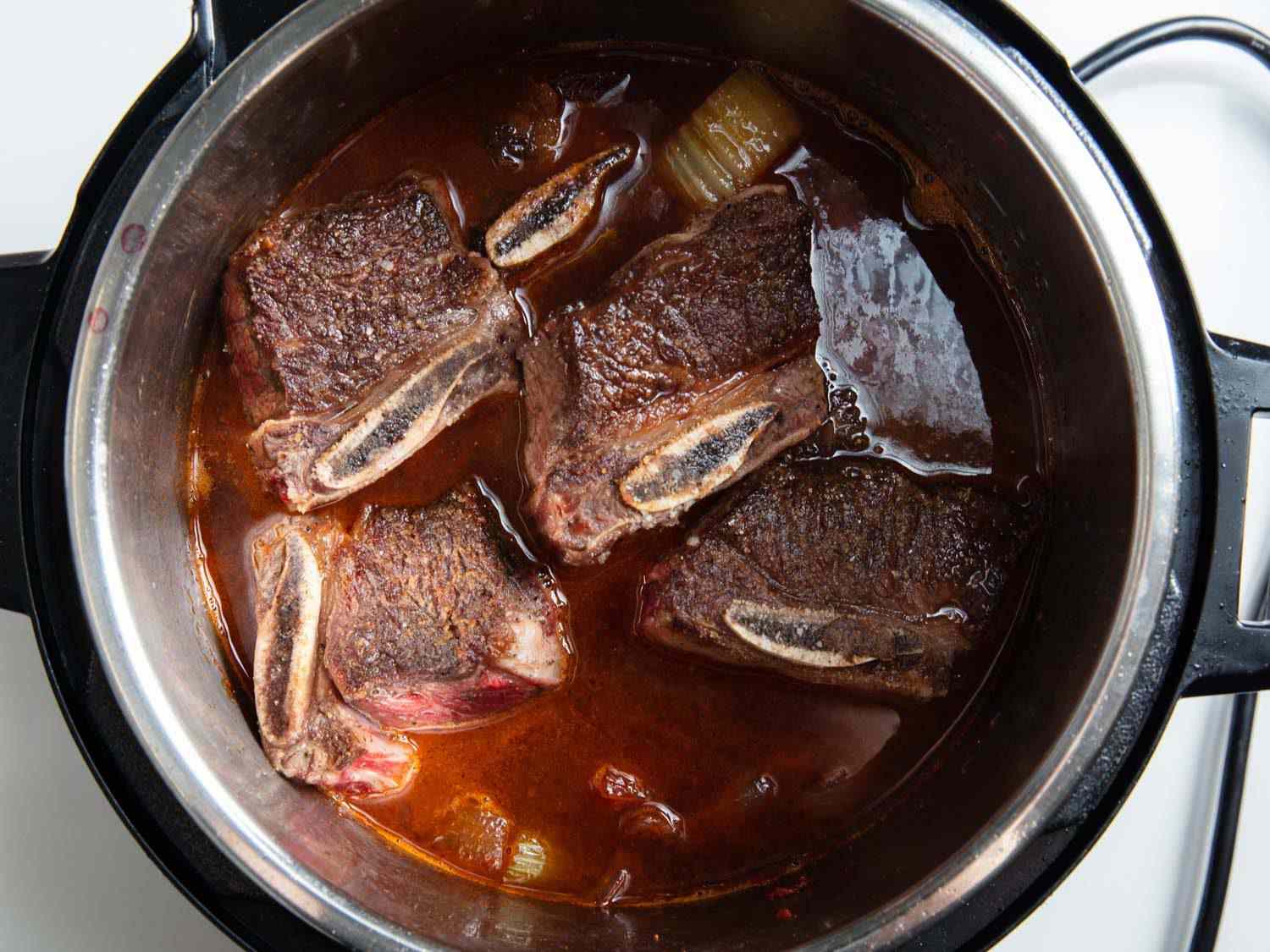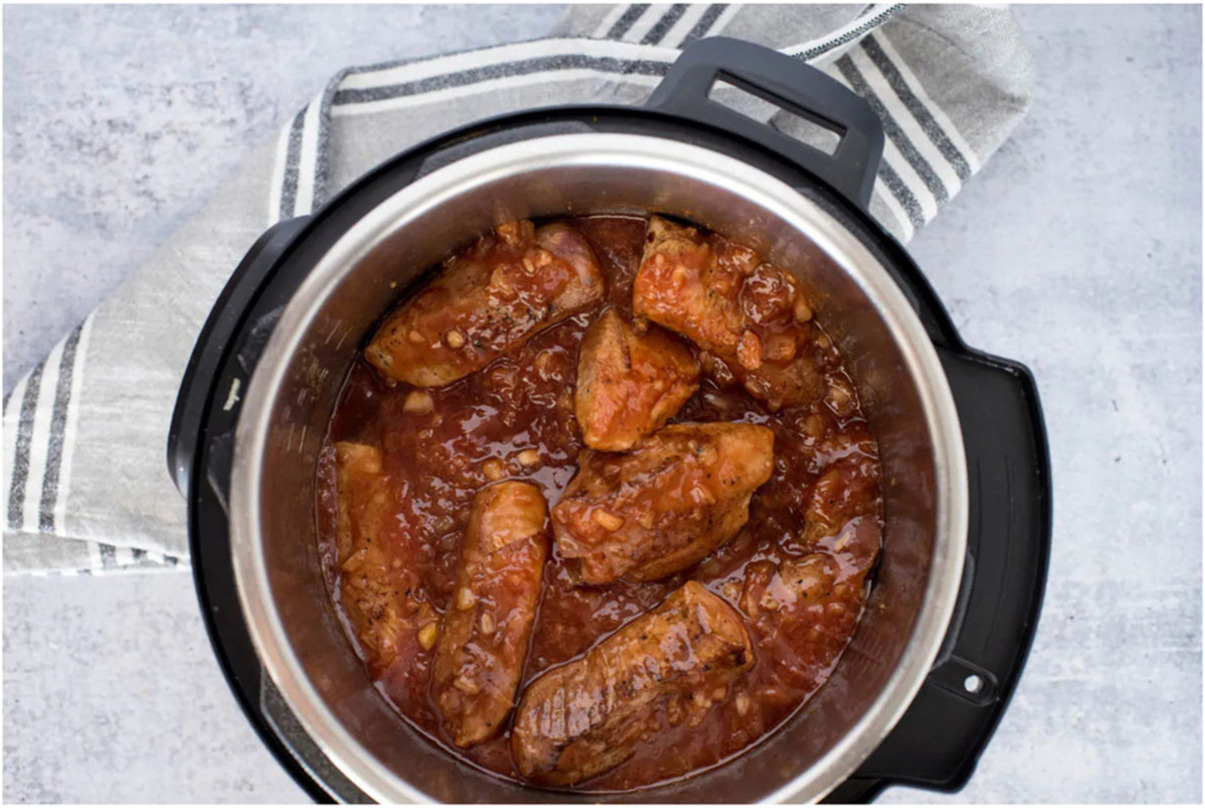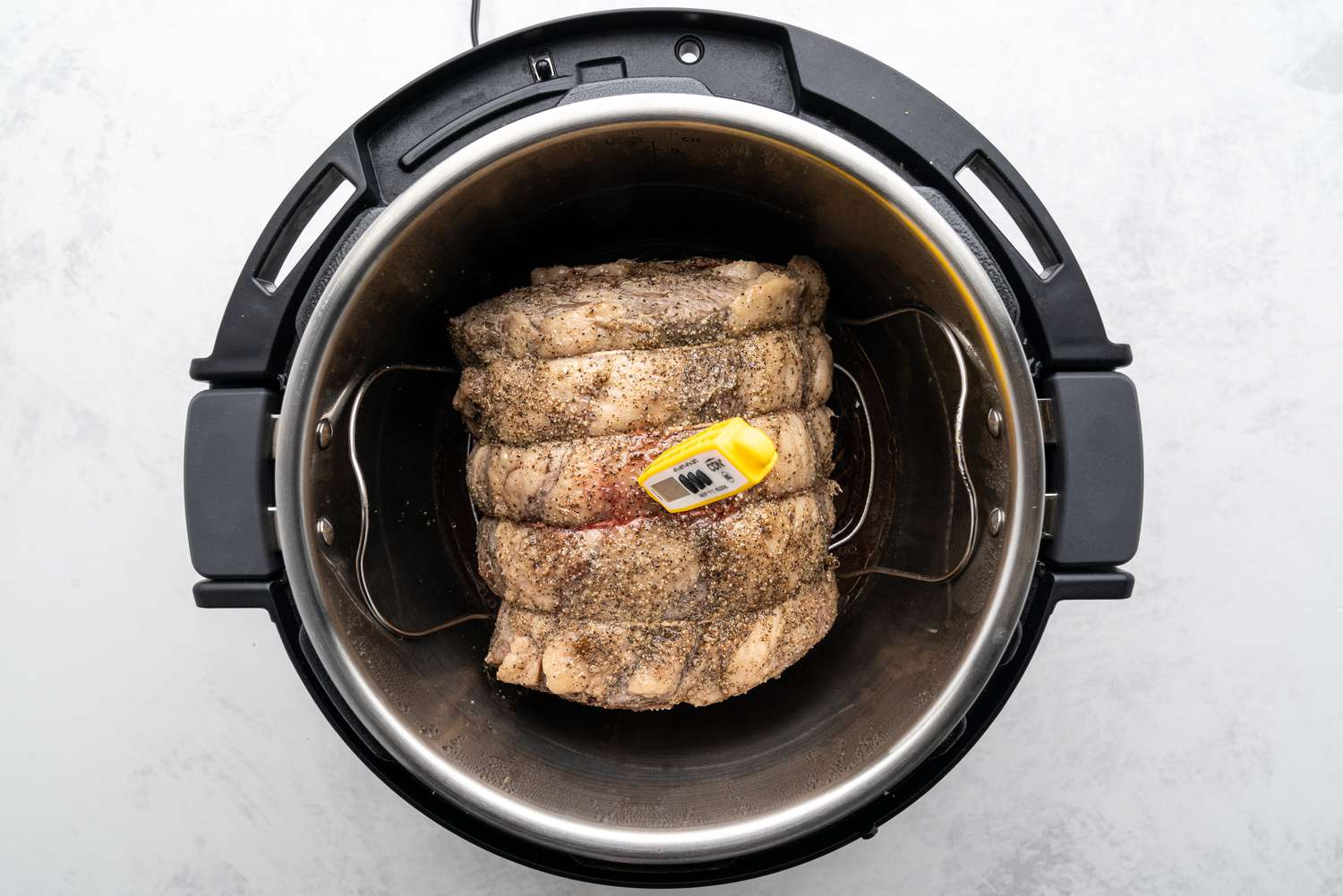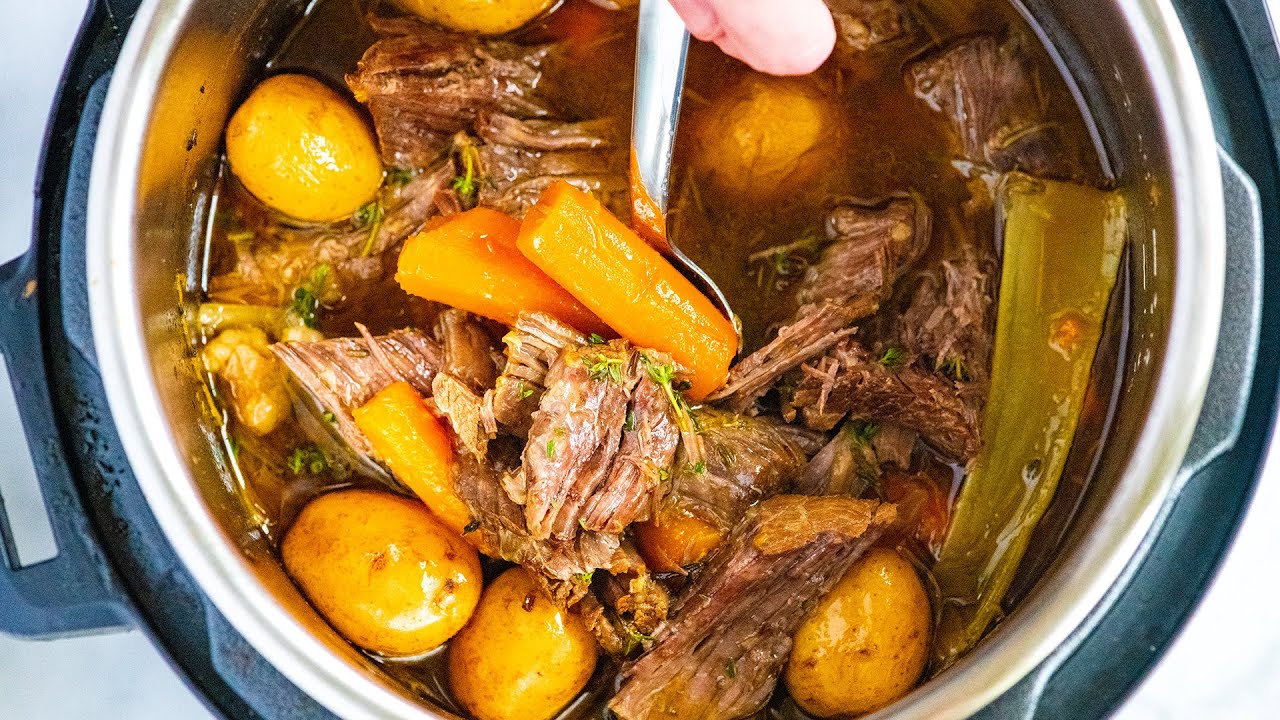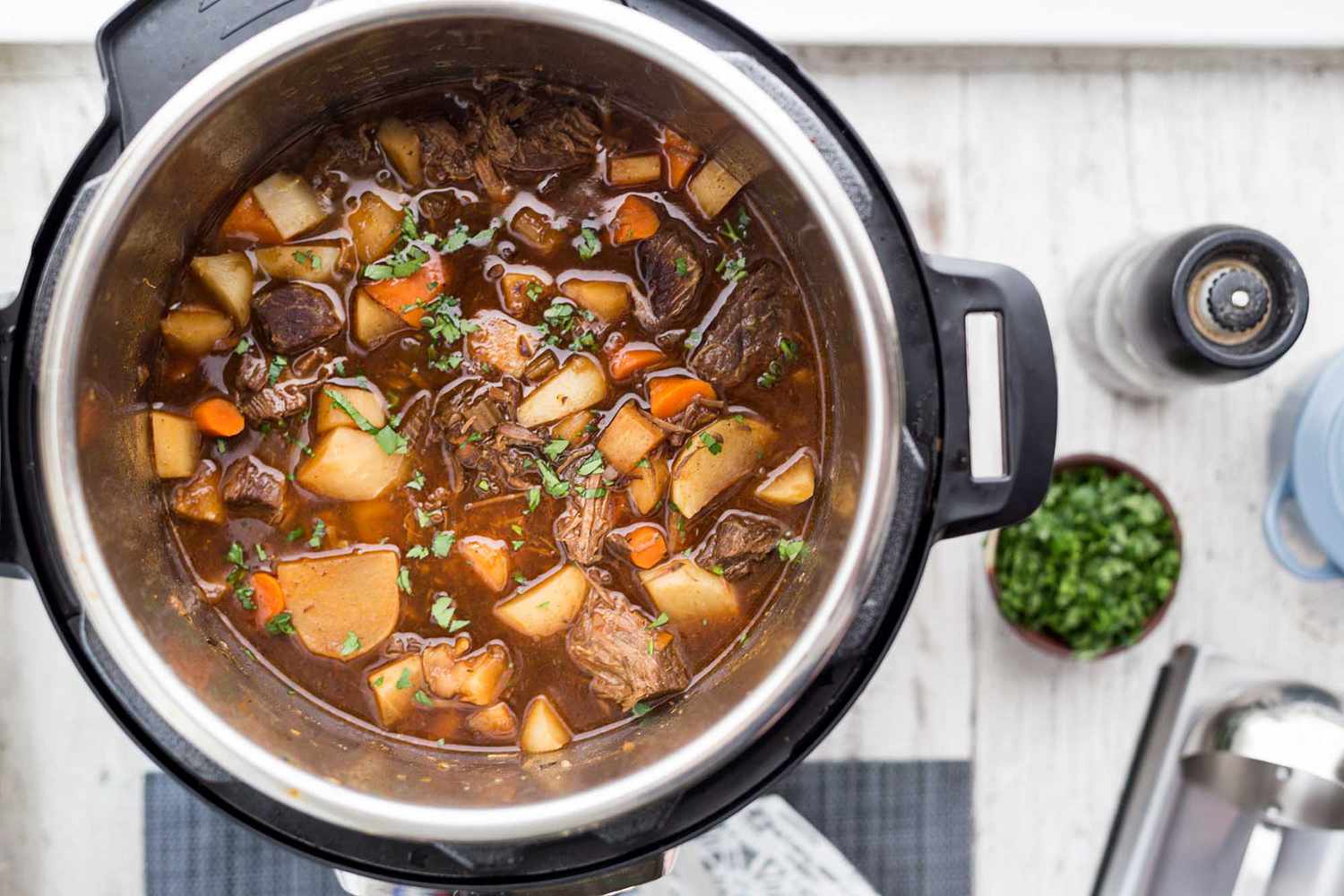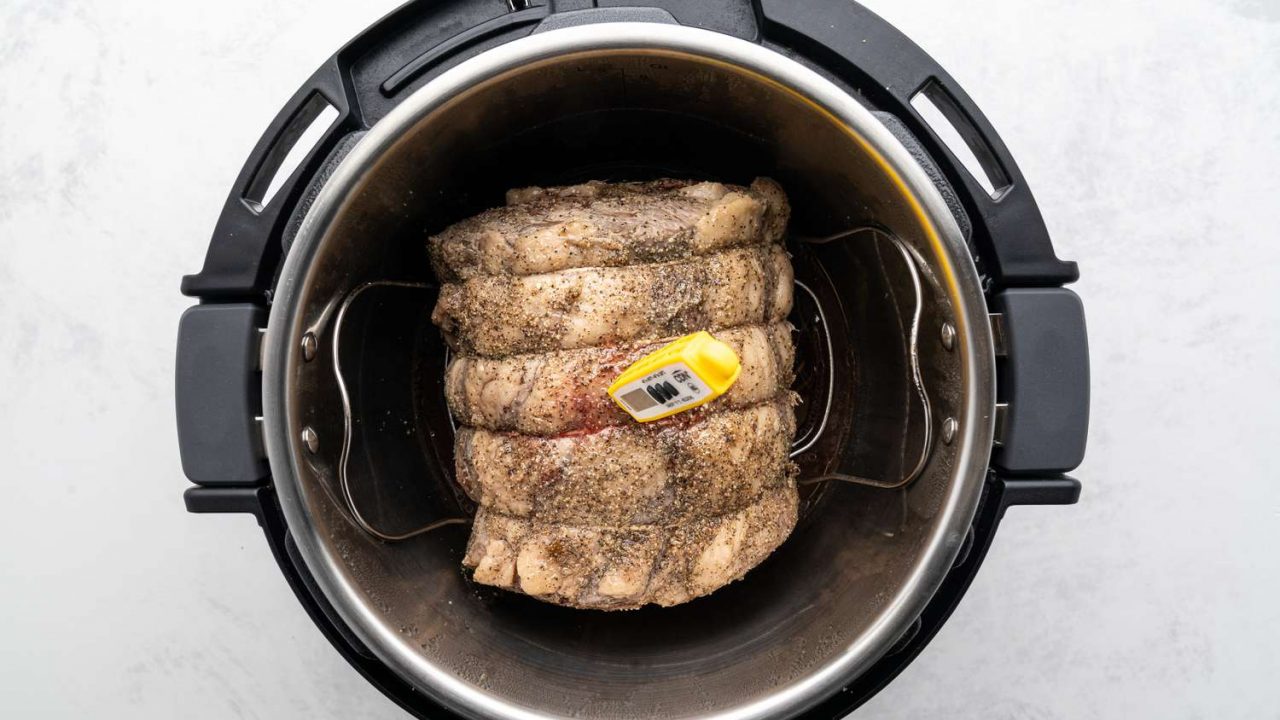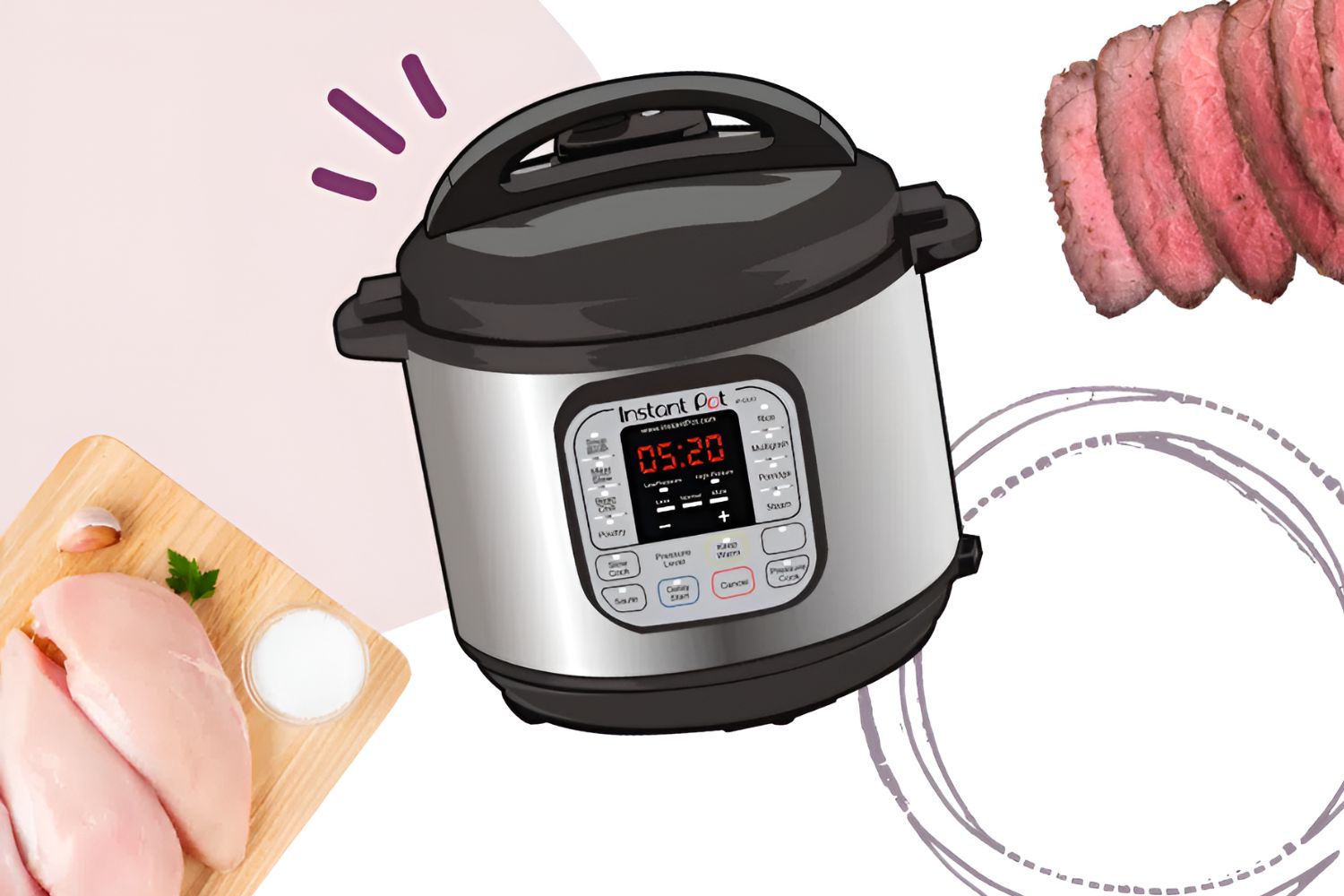Introduction
Beef short ribs are a delicious and flavorful cut of meat that can be daunting to cook. However, with the help of an electric pressure cooker, you can easily achieve tender and succulent beef short ribs in a fraction of the time compared to traditional cooking methods.
Pressure cooking is a convenient and efficient way to cook meats, as it allows for faster cooking times and helps to lock in the natural juices and flavors of the meat. With the right techniques and seasoning, you can create a mouthwatering dish that will impress your family and friends.
In this guide, we will take you through the step-by-step process of cooking beef short ribs in an electric pressure cooker. We will help you choose the best ribs, prepare them for cooking, season them to perfection, and guide you through the pressure cooking process. Whether you’re a beginner or an experienced cook, you’ll find this guide helpful in achieving tender and flavorful beef short ribs.
So, put on your apron and get ready to embark on a culinary adventure as we explore the art of cooking beef short ribs in an electric pressure cooker. Get ready to tantalize your taste buds with the rich and robust flavors of perfectly cooked beef short ribs.
Choosing the Right Beef Short Ribs
When it comes to cooking beef short ribs in an electric pressure cooker, choosing the right cut of meat is crucial for achieving optimum flavor and tenderness. Here are some tips to help you select the perfect beef short ribs for your recipe:
- Look for well-marbled meat: Marbling refers to the streaks of fat running through the meat. The more marbling, the more flavor and moisture the meat will have. Look for beef short ribs with generous marbling to ensure juicy and flavorful results.
- Consider bone-in or boneless: Beef short ribs are available in both bone-in and boneless cuts. Bone-in ribs tend to have more flavor and are ideal for slow cooking methods like pressure cooking. However, if you prefer a leaner option, boneless ribs can be a good choice.
- Choose thick and meaty ribs: Opt for beef short ribs that are thick and meaty. This will ensure that they hold up well during the cooking process and result in juicy, tender meat.
- Inspect the color and freshness: Choose beef short ribs with a bright red color. Avoid ribs that are brown or gray, as this could be a sign of spoilage. Fresh ribs should also have a slightly elastic texture. When pressed, the meat should spring back rather than leaving an indentation.
- Consider the source: When purchasing beef short ribs, it’s important to consider the source of the meat. Look for ribs from reputable suppliers that prioritize quality and sustainability. Organic or grass-fed options may also offer a more wholesome and flavorful eating experience.
By following these tips, you’ll be well on your way to selecting the perfect beef short ribs for your electric pressure cooker recipe. The right choice of meat sets the foundation for a delicious and satisfying meal that will leave you craving for more.
Preparing the Beef Short Ribs
Before you start cooking your beef short ribs in the electric pressure cooker, it’s important to properly prepare them to ensure optimal flavor and tenderness. Follow these steps to prepare your beef short ribs:
- Trim excess fat: While some fat is desirable for flavor and moisture, it’s a good idea to trim any excessive fat from the beef short ribs. Use a sharp knife to remove any large pieces of fat or silver skin.
- Bring the meat to room temperature: Take the beef short ribs out of the refrigerator and let them come to room temperature. This allows for more even cooking and helps to prevent the meat from toughening up.
- Pat dry with paper towels: Use paper towels to blot the beef short ribs and remove any excess moisture. Dry meat will brown better during the cooking process, resulting in a flavorful crust.
- Score the meat (optional): If desired, you can score the surface of the beef short ribs with a sharp knife. This helps the flavors penetrate the meat and allows for more even cooking.
- Season the meat: Before searing, it’s essential to season the beef short ribs with your choice of seasonings. A simple combination of salt, pepper, and garlic powder works well, but feel free to experiment with your favorite herbs and spices.
By properly preparing your beef short ribs before cooking, you will ensure that the flavors are well-distributed and the meat is tender and succulent. Take your time with this step, as it lays the groundwork for a delicious and satisfying meal.
Seasoning the Beef
Seasoning the beef short ribs is a critical step in the cooking process, as it adds depth of flavor and enhances the overall taste of the dish. Here are some tips on how to season your beef short ribs:
- Start with salt and pepper: Begin by generously seasoning both sides of the beef short ribs with salt and freshly ground black pepper. This helps to enhance the natural flavors of the meat.
- Experiment with additional spices and herbs: While salt and pepper are the basics, you can elevate the flavor of your beef short ribs by adding a variety of spices and herbs. Consider using ingredients like garlic powder, onion powder, paprika, thyme, rosemary, or cumin. These spices can complement the richness of the beef and add layers of complexity to the dish.
- Marinate for extra flavor (optional): If you have the time, you can marinate the beef short ribs for a few hours or overnight to further infuse the meat with flavor. A simple marinade made with ingredients like soy sauce, Worcestershire sauce, honey, or balsamic vinegar can work wonders in tenderizing and flavoring the meat.
- Consider the cooking method: Since the beef short ribs will be cooked in an electric pressure cooker, it’s important to account for the concentrated flavors that will develop during pressure cooking. Avoid overly salty or intense seasonings, as they can become overpowering under pressure. Instead, aim for a well-balanced seasoning that will complement the final dish.
Remember, seasoning is a personal preference, so feel free to adjust the flavors and experiment with different combinations to suit your taste. Whether you prefer a more classic seasoning or want to explore bold and unique flavors, the right seasoning will elevate your beef short ribs to a whole new level of deliciousness.
Searing the Beef Short Ribs
Before pressure cooking the beef short ribs, it’s essential to sear them. Searing helps to develop a rich and flavorful crust on the meat, enhancing the overall taste of the dish. Here’s how to properly sear your beef short ribs:
- Preheat the pressure cooker: Start by preheating your electric pressure cooker on the sauté or browning setting. This will allow the cooker to reach the desired temperature for searing.
- Add oil or fat: Once the pressure cooker is hot, add a tablespoon of oil or fat. You can use vegetable oil, olive oil, or even bacon fat for added flavor.
- Sear the short ribs: Carefully place the seasoned beef short ribs into the hot oil or fat, one at a time. Sear each side of the ribs for 2-3 minutes, or until a brown crust forms. This browning step adds flavor and texture to the meat.
- Do not overcrowd the cooker: It’s important not to overcrowd the pressure cooker, as this can prevent proper browning. Sear the beef short ribs in batches, if necessary.
- Remove the seared ribs: Once each batch is seared, carefully remove the beef short ribs from the pressure cooker and set them aside on a plate. This will prevent the ribs from overcooking during the next steps.
Searing the beef short ribs helps to lock in the juices and creates a delicious caramelized crust that adds depth of flavor to the final dish. Remember, the goal is not to fully cook the ribs at this stage; the pressure cooking process will take care of that. Searing is about enhancing the texture and taste of the meat.
With the beef short ribs properly seared, you’re now ready to move on to the next step in the electric pressure cooking process.
Adding the Liquid
After searing the beef short ribs, it’s time to add the liquid to the electric pressure cooker. The liquid not only helps to create steam for pressure cooking but also infuses the meat with flavor as it cooks. Here’s what you need to know about adding the liquid:
- Choose the right liquid: For pressure cooking beef short ribs, you’ll need a flavorful liquid to enhance the taste of the meat. Common options include beef broth, red wine, beer, or a combination of these. You can also add aromatics like onions, garlic, and herbs to further enhance the flavor of the liquid.
- Measure the liquid: The amount of liquid you’ll need can vary depending on the size of your pressure cooker and the number of beef short ribs you’re cooking. As a general guideline, aim for about 1 cup of liquid for every pound of beef short ribs. This will provide enough moisture to create steam and prevent the ribs from drying out.
- Add the liquid and deglaze the cooker: Pour the liquid into the pressure cooker, taking care to scrape any browned bits from the bottom of the pot. This process, known as deglazing, helps to incorporate the flavorful bits into the liquid and prevents them from burning during pressure cooking.
- Avoid overfilling the cooker: Be mindful not to exceed the maximum fill line indicated on your pressure cooker. Overfilling can lead to improper pressure buildup and hinder the cooking process. As a rule of thumb, it’s best to leave some space for the liquid to expand and create steam.
Adding the liquid is an important step in pressure cooking as it contributes to the flavors and helps to create a moist and tender end result. With the liquid added, you’re now ready to move on to the next phase – pressure cooking the beef short ribs to perfection.
Pressure Cooking the Beef Short Ribs
Now that the beef short ribs have been seared and the liquid has been added, it’s time to pressure cook them to tender perfection. The electric pressure cooker will create a high-pressure environment that quickly cooks the meat while retaining its moisture. Here’s how to pressure cook the beef short ribs:
- Secure the lid: Place the lid on the pressure cooker and make sure it’s securely locked into place. This is crucial for building up pressure and ensuring a safe cooking process.
- Select the appropriate cooking time: Consult the manual of your electric pressure cooker to determine the recommended cooking time for beef short ribs. Typically, pressure cooking beef short ribs takes about 45-60 minutes on high pressure.
- Set the pressure cooking mode: Select the high-pressure cooking mode on your electric pressure cooker. Depending on the model, you may also need to adjust the settings for temperature and cooking time.
- Start the cooking process: Once you’ve set the pressure cooking mode and time, press the start button to begin the cooking process. The pressure cooker will take some time to build up pressure before the cooking time starts counting down.
- Allow for natural pressure release: Once the cooking time is complete, you have the option to either perform a natural pressure release or a quick release. Natural pressure release involves letting the pressure subside naturally over a period of time, typically about 10-15 minutes. This allows the meat to continue cooking and helps to retain its juices.
- Inspect the meat for doneness: After the pressure has been released, carefully open the lid and use a meat thermometer or fork to check for doneness. The beef short ribs should be tender and easily pulled apart. If they are not yet done to your liking, you can continue pressure cooking for a few more minutes.
Pressure cooking is an efficient and convenient method for achieving tender and flavorful beef short ribs. With the cooking process complete, you’re now ready to take the meat out of the pressure cooker and move on to the next steps of serving and enjoying your delicious creation.
Natural Release vs. Quick Release
When pressure cooking beef short ribs, it’s important to understand the two methods of releasing pressure from your electric pressure cooker: natural release and quick release. Both methods have their benefits and should be chosen based on the recipe and desired outcome. Here’s a breakdown of each method:
Natural Release:
Natural release involves allowing the pressure in the cooker to decrease naturally over a period of time after the cooking process is complete. This is done by turning off the heat and letting the pressure release on its own. Here are a few key points about natural release:
- Preserves texture and juiciness: Allowing the pressure to release naturally helps to preserve the texture and juiciness of the beef short ribs. This method allows the meat to continue cooking in residual heat and retain its tenderness.
- Prevents meat from drying out: Natural release prevents sudden changes in pressure, which can cause meats to tighten and dry out. The gradual release of pressure ensures that the beef short ribs remain moist and succulent.
- Takes longer than quick release: Natural release can take anywhere from 10-15 minutes or longer, depending on the amount of pressure in the cooker. It requires patience and a bit more time, but it’s worth it for the tender and flavorful end result.
Quick Release:
Quick release involves manually releasing the pressure from the cooker using the pressure release valve. This method rapidly decreases the pressure inside the cooker. Here are a few things to consider about quick release:
- Fast and convenient: Quick release allows you to rapidly release pressure from the cooker, making it a time-saving method. This is particularly useful when you’re short on time or need to stop the cooking process quickly.
- Risk of overcooking: While quick release provides an immediate result, it may lead to slightly overcooked meat compared to natural release. The sudden drop in pressure can cause the beef short ribs to continue cooking if not removed from the cooker promptly.
- Use caution when releasing pressure: When performing a quick release, ensure safety by carefully following the manufacturer’s instructions. Keep your face and hands away from the vent as the steam is released to avoid any potential burns.
Whether you choose natural release or quick release, it’s important to consider the recipe and desired outcome. Natural release is ideal for preserving texture and moisture, while quick release offers convenience when time is of the essence. Choose the method that best suits your needs and proceed to the next steps of removing the beef short ribs from the pressure cooker.
Removing the Beef Short Ribs from the Pressure Cooker
Once the beef short ribs are done pressure cooking and the pressure has been released, it’s time to remove them from the cooker. Properly removing the meat ensures that it stays tender and intact. Here’s how to do it:
- Turn off the pressure cooker: First, turn off the heat or unplug the pressure cooker to ensure it’s no longer cooking under pressure.
- Allow steam to fully release: Before attempting to open the lid, make sure all the steam has been released from the pressure cooker. This can be confirmed by checking the pressure release valve; it should no longer emit steam or hissing sounds.
- Open the lid carefully: Once all the pressure has been released, carefully unlock and open the lid of the pressure cooker. Be cautious of any remaining steam and tilt the lid away from you to avoid getting burned.
- Remove the beef short ribs: Using tongs or a slotted spoon, carefully lift the beef short ribs out of the pressure cooker and transfer them to a serving platter or plate. Be gentle to avoid breaking or shredding the meat.
- Let the meat rest: Allow the beef short ribs to rest for a few minutes before serving. This helps to distribute the juices throughout the meat and ensures maximum tenderness.
- Strain the cooking liquid (optional): If desired, you can strain the cooking liquid left in the pressure cooker to remove any solids or impurities. This liquid can be used for making a sauce or gravy to accompany the beef short ribs.
By following these steps, you can safely and easily remove the beef short ribs from the pressure cooker. Remember to handle the hot meat and liquid with caution to avoid any accidents or burns. Once the meat is removed, you’re now ready to move on to the next step of making a delicious sauce or gravy to accompany your tender beef short ribs.
Making a Sauce or Gravy
A sauce or gravy can elevate the flavors of your beef short ribs, adding an extra layer of richness and depth to the dish. Here’s how you can create a delicious sauce or gravy to accompany your tender meat:
- Strain and reserve the cooking liquid: If you haven’t done so already, strain the liquid from the pressure cooker to remove any solids or impurities. Reserve the liquid, as it will serve as the base for your sauce or gravy.
- Reduce the cooking liquid: Pour the strained cooking liquid into a saucepan and bring it to a simmer over medium heat. Allow the liquid to reduce and thicken slightly. This concentrates the flavors, making them more intense.
- Adjust the consistency: If you prefer a thicker sauce or gravy, you can whisk in a mixture of cornstarch and cold water, or flour and butter, into the simmering liquid. Stir continuously until the desired consistency is reached. If the sauce is too thick, you can add more liquid to thin it out.
- Season to taste: Taste the sauce and adjust the seasoning as needed. Add salt, pepper, or other herbs and spices to enhance the flavors. You can also add a splash of Worcestershire sauce, balsamic vinegar, or a squeeze of lemon juice to add complexity.
- Enhance the flavor (optional): For an extra burst of flavor, you can incorporate additional ingredients into your sauce or gravy. This could include sautéed onions, minced garlic, mushrooms, red wine, beef broth, or fresh herbs like thyme or rosemary. Experiment with different combinations to create a sauce that complements your beef short ribs.
Remember, creating a sauce or gravy is an opportunity to showcase your creativity and personalize the flavors to your liking. Adjust the seasonings and ingredients to suit your taste preferences, and don’t be afraid to experiment and make it your own.
With the sauce or gravy prepared, you’re now ready to serve and enjoy your perfectly cooked beef short ribs with a mouthwatering accompaniment.
Serving and Enjoying your Beef Short Ribs
Now that your beef short ribs are beautifully cooked and accompanied by a delicious sauce or gravy, it’s time to serve and savor the flavors. Here are some tips for serving and enjoying your beef short ribs:
- Plating the beef short ribs: Carefully arrange the beef short ribs on a serving platter or individual plates. You can choose to serve them bone-in or boneless, depending on your preference and the presentation you desire.
- Drizzle with the sauce: Pour a generous amount of the prepared sauce or gravy over the beef short ribs. This will add moisture, flavor, and visual appeal to the dish.
- Garnish with fresh herbs: Sprinkle some freshly chopped herbs, such as parsley, cilantro, or chives, over the beef short ribs to add a pop of freshness and color.
- Serve with sides: Consider serving your beef short ribs alongside complementary sides such as mashed potatoes, roasted vegetables, creamy polenta, or a fresh salad. These sides will balance the richness of the meat and complete the meal.
- Invite others to dig in: Beef short ribs are a satisfying and shareable dish, so invite your family and friends to join you at the table. The tender meat and flavorful sauce make for a memorable dining experience.
- Enjoy every bite: Slowly savor the tender, juicy meat, allowing the flavors to unfold on your palate. Take a moment to appreciate the combination of textures and the depth of flavors that the pressure cooking process has imparted.
- Save leftovers for later: If you have leftovers, store them in an airtight container in the refrigerator. The beef short ribs can be reheated gently in the microwave or oven for another delicious meal the next day.
Remember, serving and enjoying your beef short ribs is an opportunity to indulge in the fruits of your cooking labor. Take your time, relish each bite, and appreciate the effort that went into creating such a delectable dish.
So, gather your loved ones around the table, raise a glass, and toast to the success of your beef short ribs masterpiece. Enjoy the culinary journey you’ve embarked on and savor the moment!







